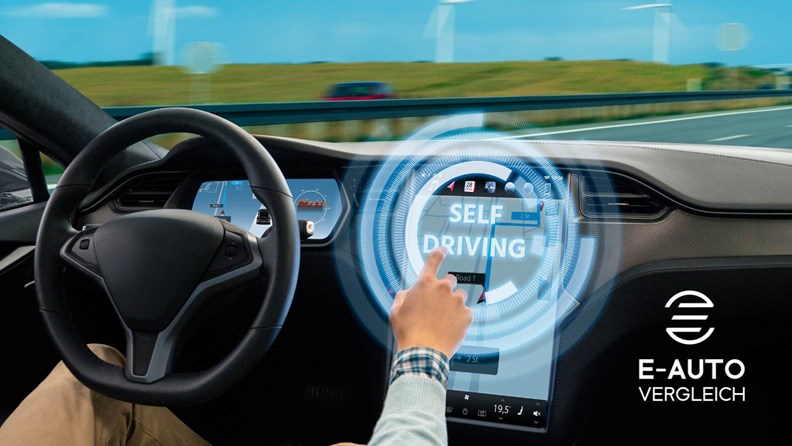Autonomous driving, this idea is not necessarily new, but it is a topic that is becoming increasingly popular, especially these days. Overall, this idea is very tempting, just imagine that you no longer have to do anything in the car and would always arrive safely at your destination . An idea that you like to dream about and yet it doesn't seem to be that far away anymore. The technical innovations, innovations and the bold reaching for the stars of many researchers bring us a lot closer to this possibility.
There is a lot of discussion in the media about the current status, with the terms Level 1 to Level 5 being mentioned again and again. But what do you have to imagine by the individual levels and what level is research and industry currently at? These questions should be addressed first.
The individual levels at a glance
In order to properly understand the topic of autonomous driving, it is important to know the individual subdivisions. These are divided into levels, with there being 5 levels when it comes to autonomous driving. Level 0, no longer included in the following list, would describe typical driving without any aids/supporting vehicle system. The vehicle is controlled exclusively by the driver himself.
The other levels 1 to 5 define the individual levels in which technical aids are used. You will certainly know some of the options from everyday life, but would rarely have associated them with the term level. But just look for yourself:
Level 1: Assisted
Level 1 describes the assisted driving option . This level is primarily about supporting the driver in his actions and/or making his journey easier. Almost every modern vehicle has various assistance systems, such as cruise control . Level 1 requires the driver to always have the steering wheel in their hands and an eye on the traffic in order to be able to intervene if the technology fails. Bad weather in particular is a typical cause of the failure or incorrect functioning of such technologies.
Level 2: Partially automated
You have certainly heard of Level 2 many times without the term Level 2 being mentioned. This level includes those vehicles that can, for example, drive autonomously in a straight line on highways without the driver having to intervene. Lane assistants are also used in these vehicles. At level 2, it is already possible to hand over complete control of the vehicle to the computer in traffic jams. The upper class vehicles, such as the E-Class from Mercedes or vehicles from Audi , such as the Q7, are examples of a Level 2 vehicle.
However, this does not mean that this level type only exists in high-priced vehicles. Nissan, Kia and Hyundai also have various vehicle models in their range that have this technology and are therefore considered Level 2 vehicles. In 2019, this level was still one of the most modern versions imaginable in a vehicle. However, the next levels will show how quickly the technology can change.
Level 3: Highly automated
Still wishful thinking in 2019, the highly automated level , known as Level 3 for short, has long since been reached. It is not just Tesla , as is often incorrectly assumed, that is a manufacturer that has vehicles with this technology. Audi and Daimler have also long since reached this level and offer vehicles with impressive capabilities, as you will soon see.
Level 3 includes those vehicle types that can carry out independent overtaking maneuvers on motorways , swim with the flow of vehicles and adapt to the respective conditions. Despite modern technology, the driver must always be ready to intervene in the situation if problems arise. So we can't speak of an autopilot here yet. Motorway exits pose a particular problem. Vehicles are unable to navigate to and use a specific exit independently and without assistance. In short, this is where the driver must intervene.
Level 4: Fully automated
Anyone who has ever wondered why car manufacturers now attach more importance to the vehicle's interior looking like a converted living room should take a closer look at Level 4. This level 4 is expected in the near future and can already be found on the roads in some cases. Vehicles that have their own parking system, i.e. automated parking , are already precursors to Level 4 vehicles. But of course this is not the only function that such a car must have.
Level 4 vehicles drive independently both in the city and on country roads and offer or give the driver time to concentrate on other things. Here too, communication with the environment is used. But what does that mean exactly? This principle was already used in Level 3. If a vehicle communicates with its environment, it is informed, for example, about traffic light phases or vehicle lane changes. This happens via numerous sensors that are installed all around the car. This is also referred to as a 360 degree view of the vehicle. With the help of this technology, the car can also recognize and analyze complex situations and make logical decisions.
Level 5: Driverless
The absolute dream is combined in Level 5. In short, this level describes those vehicles that do not require a driver at all . The vehicle takes the occupants to the desired destination using only the technical aids installed in the vehicle. A symbol of this stage is the car without a steering wheel . However, in order for this to be realized, some technical problems still need to be solved. What these are will be considered in the following section.
What are the focal points/problems with autonomous driving?
For a vehicle to be able to drive completely autonomously, it is important that it has an all-round view in order to be prepared for all eventualities in the surrounding area. This technology is discussed in Level 3 and Level 4 and is already being used. One of the biggest hurdles, however, is the complex data transmission. GPS data is very precise and can be very helpful in many areas. But the data is not enough for autonomous driving. The reason here is very simple. GPS data is accurate to about two meters, assuming the optimal case. However, 2 meters is clearly too much leeway if you want to control a car with centimeter precision. A technical innovation is needed here. Renowned companies are already working on this problem and are carrying out new measurements to provide more precise data. However, as you can imagine, this will still take some time until every spot on earth has been accurately measured.
When could fully autonomous driving become a reality?
The industry's target is 2025 . However, it must be said at this point that this is the desired date of the large corporations , which often differs somewhat from reality. However, due to rapid development, technical advances and ever-increasing competitive pressure between manufacturers, early success could be on the cards. Maybe it won't be the year 2025 when more autonomous vehicles will be used, but it can be assumed that the time will be in this area. One question has already been clarified at this point. While a few years ago it was fiction to think of Level 5 vehicles, today it is clear that they will exist. The timing for this has not yet been decided. But we are taking big steps towards this goal.











.png)